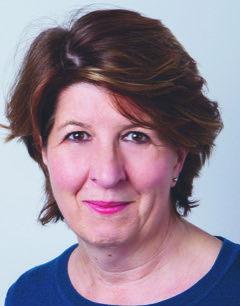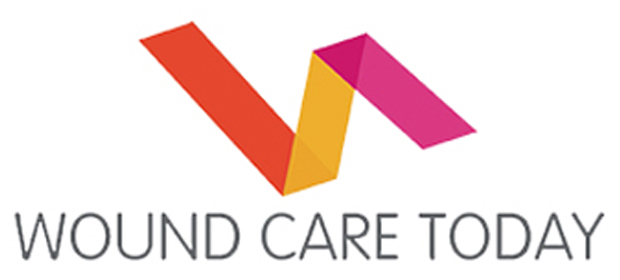
Una Adderley
Director, National Wound Care Strategy Programme
If I were a stick of rock, you would find the word ‘NURSE’ right through me (or maybe ‘community tissue viability nurse’ if there was enough room for all those letters!) So, in 2018, when I came into post as director of the National Wound Care Strategy programme (NWCSP), I saw the issue primarily through a clinical lens. I was not so cloistered that I thought wound care was just a nursing issue, but I did think that it was primarily a clinical challenge. If we could just get the clinical pathways sorted and get everyone who saw people with wounds (GPs, paramedics, podiatrists, surgeons and so on) to work in a more collaborative and coordinated way, we would solve the problem.
However, about a year in I had a ‘lightbulb’ moment. As we attempted to get to grips with the extent of the problem, it became increasingly clear that there was a serious lack of usable wound care data. It would be impossible to undertake the necessary quality improvement in an environment which lacked good quality data to accurately measure the size of the wound care problem and to enable meaningful benchmarking.
The Guest et al publications (2015; 2020) have been helpful in giving an estimate of the extent of the wound care burden, but we lack detailed valid and reliable data at organisation-level upon which to build quality improvement work. Put simply, although for many years, clinicians have been recording clinical information into patient records, without the use of agreed codes and electronic systems capable of data sharing, all this information has been going into a black hole.
So, our digital, data and information work is now a much more prominent part of the NWCSP. In line with the NHS ambition for improved digitalisation, we are convinced that improving wound care in a sustainable way cannot happen without the implementation of point-of-care (POC), NHS compliant mobile digital technology (with digital imaging) capable of interfacing with other essential NHS data systems. Such systems will facilitate integrated care and support quality improvement by providing data feedback to inform and tailor service provision to local needs. It will also improve clinical care by providing high quality clinical information to clinicians and patients. These systems are not new, but uptake in UK clinical care has been slow. A register of known providers can be found on the NWCSP website.
However, about a year in I had a ‘lightbulb’ moment. As we attempted to get to grips with the extent of the problem, it became increasingly clear that there was a serious lack of usable wound care data. It would be impossible to undertake the necessary quality improvement in an environment which lacked good quality data to accurately measure the size of the wound care problem and to enable meaningful benchmarking.
The Guest et al publications (2015; 2020) have been helpful in giving an estimate of the extent of the wound care burden, but we lack detailed valid and reliable data at organisation-level upon which to build quality improvement work. Put simply, although for many years, clinicians have been recording clinical information into patient records, without the use of agreed codes and electronic systems capable of data sharing, all this information has been going into a black hole.
So, our digital, data and information work is now a much more prominent part of the NWCSP. In line with the NHS ambition for improved digitalisation, we are convinced that improving wound care in a sustainable way cannot happen without the implementation of point-of-care (POC), NHS compliant mobile digital technology (with digital imaging) capable of interfacing with other essential NHS data systems. Such systems will facilitate integrated care and support quality improvement by providing data feedback to inform and tailor service provision to local needs. It will also improve clinical care by providing high quality clinical information to clinicians and patients. These systems are not new, but uptake in UK clinical care has been slow. A register of known providers can be found on the NWCSP website.
The NWCSP’s focus is on pressure ulcers, lower limb wounds and surgical wounds. Future pressure ulcer surveillance systems need to draw data from the existing systems used for data collection. To begin with, we are working with data teams in NHS England and Improvement to review existing pressure ulcer surveillance data and to develop improved surveillance systems that will use pressure ulcer data captured at the POC, rather than requiring additional data collection which needs additional resource.
At the same time, we are working with our newly recruited first tranche implementation sites to develop the systems and metrics needed to improve data about lower limb wounds. Alongside a commitment to implementing the NWCSP lower limb recommendations, each of our sites has also committed to implementing a form of mobile wound management digital system, evaluating that implementation, and supporting the development of a blueprint for implementation so other NHS organisations can learn from their experience. This work is being further supported by additional NHS England and Improvement investment that has allowed the NWCSP to fund these sites to recruit further digital project management and a NWCSP digital and data programme manager. This NWCSP ‘digital army’ will link up with the new digital posts being created with NHS England and Improvement.
We hope that we can use the learning from this work to inform our work with the GIRFT (Get it Right First Time) team to improve the existing surgical site infection surveillance systems. With earlier discharge of patients following surgery, systems are needed that can follow the patient from secondary care into primary care and community services, including
measuring wound dehiscence rates.
So, moving forwards, if we are to improve wound care, we must pay attention to the ‘digital and data debt’ in current clinical services. To paraphrase Mark Carney in his recent Reith lectures, ‘What gets measured, gets managed’. If we are going to manage wound care better, we must get better at measuring wound care and we can only get better at measuring if we embrace the digital agenda.
At the same time, we are working with our newly recruited first tranche implementation sites to develop the systems and metrics needed to improve data about lower limb wounds. Alongside a commitment to implementing the NWCSP lower limb recommendations, each of our sites has also committed to implementing a form of mobile wound management digital system, evaluating that implementation, and supporting the development of a blueprint for implementation so other NHS organisations can learn from their experience. This work is being further supported by additional NHS England and Improvement investment that has allowed the NWCSP to fund these sites to recruit further digital project management and a NWCSP digital and data programme manager. This NWCSP ‘digital army’ will link up with the new digital posts being created with NHS England and Improvement.
We hope that we can use the learning from this work to inform our work with the GIRFT (Get it Right First Time) team to improve the existing surgical site infection surveillance systems. With earlier discharge of patients following surgery, systems are needed that can follow the patient from secondary care into primary care and community services, including
measuring wound dehiscence rates.
So, moving forwards, if we are to improve wound care, we must pay attention to the ‘digital and data debt’ in current clinical services. To paraphrase Mark Carney in his recent Reith lectures, ‘What gets measured, gets managed’. If we are going to manage wound care better, we must get better at measuring wound care and we can only get better at measuring if we embrace the digital agenda.
References
Guest JF, Ayoub N, McIlwraith T, et al (2015) Health economic burden that wounds impose on the National Health Service in the UK. BMJ Open 5: e009283
Guest JF, Fuller GW, Vowden P (2020) Cohort study evaluating the burden of wounds to the UK’s National Health Service in 2017/2018: update from 2012/2013. BMJ Open 10(12): e045253
Guest JF, Fuller GW, Vowden P (2020) Cohort study evaluating the burden of wounds to the UK’s National Health Service in 2017/2018: update from 2012/2013. BMJ Open 10(12): e045253




 Success!
Success!